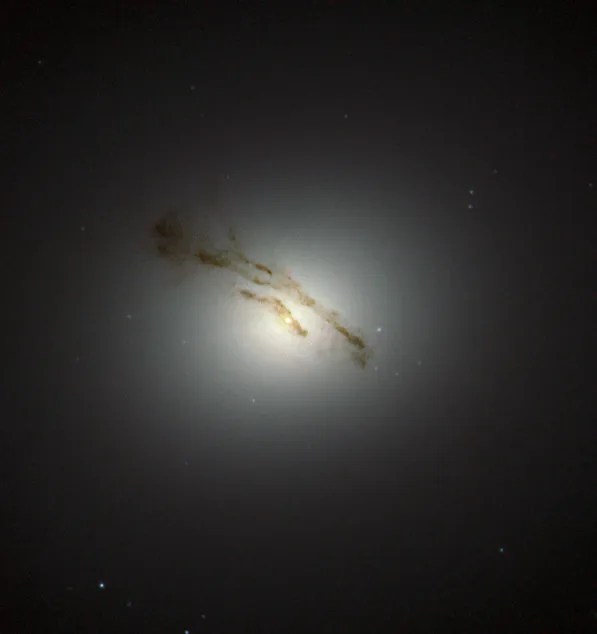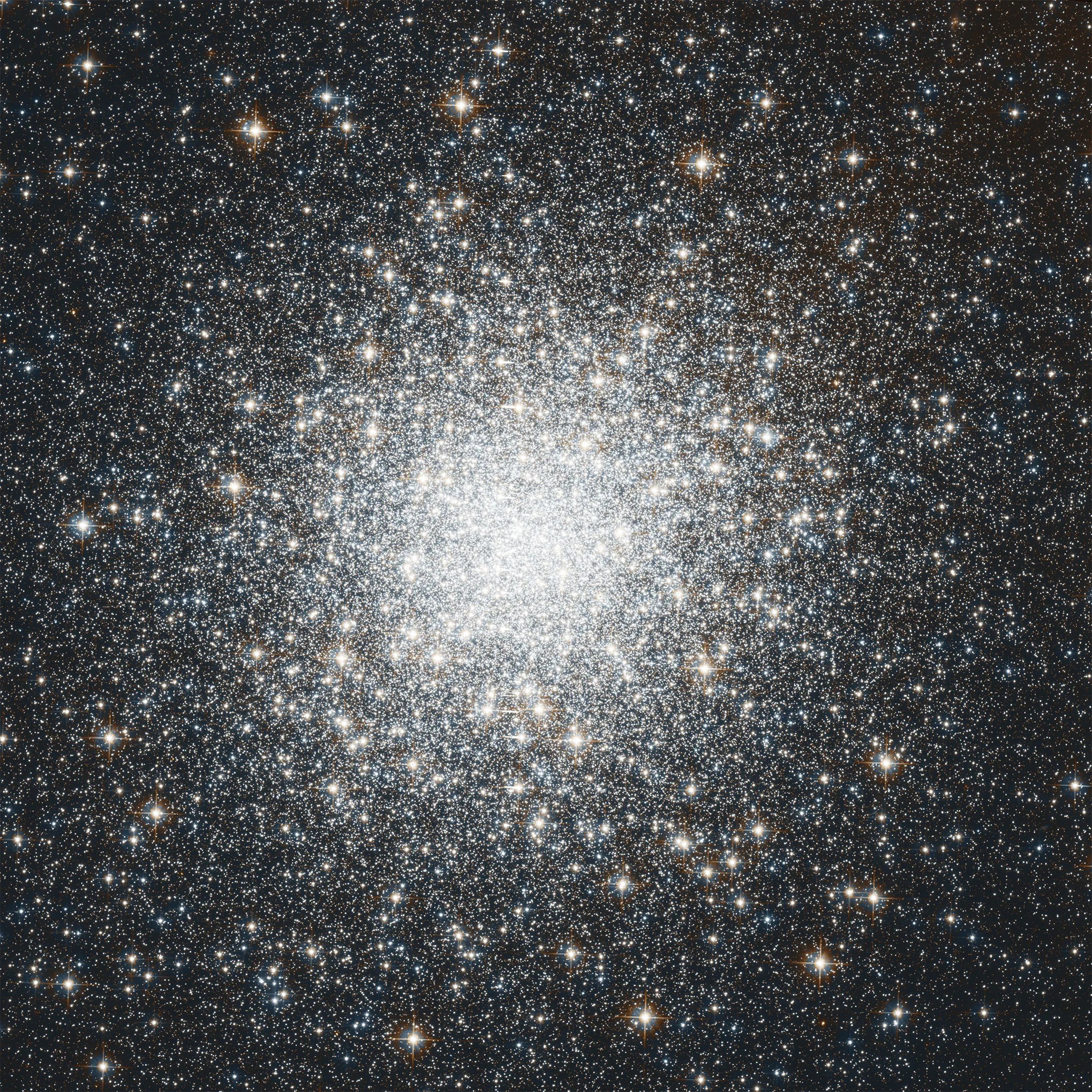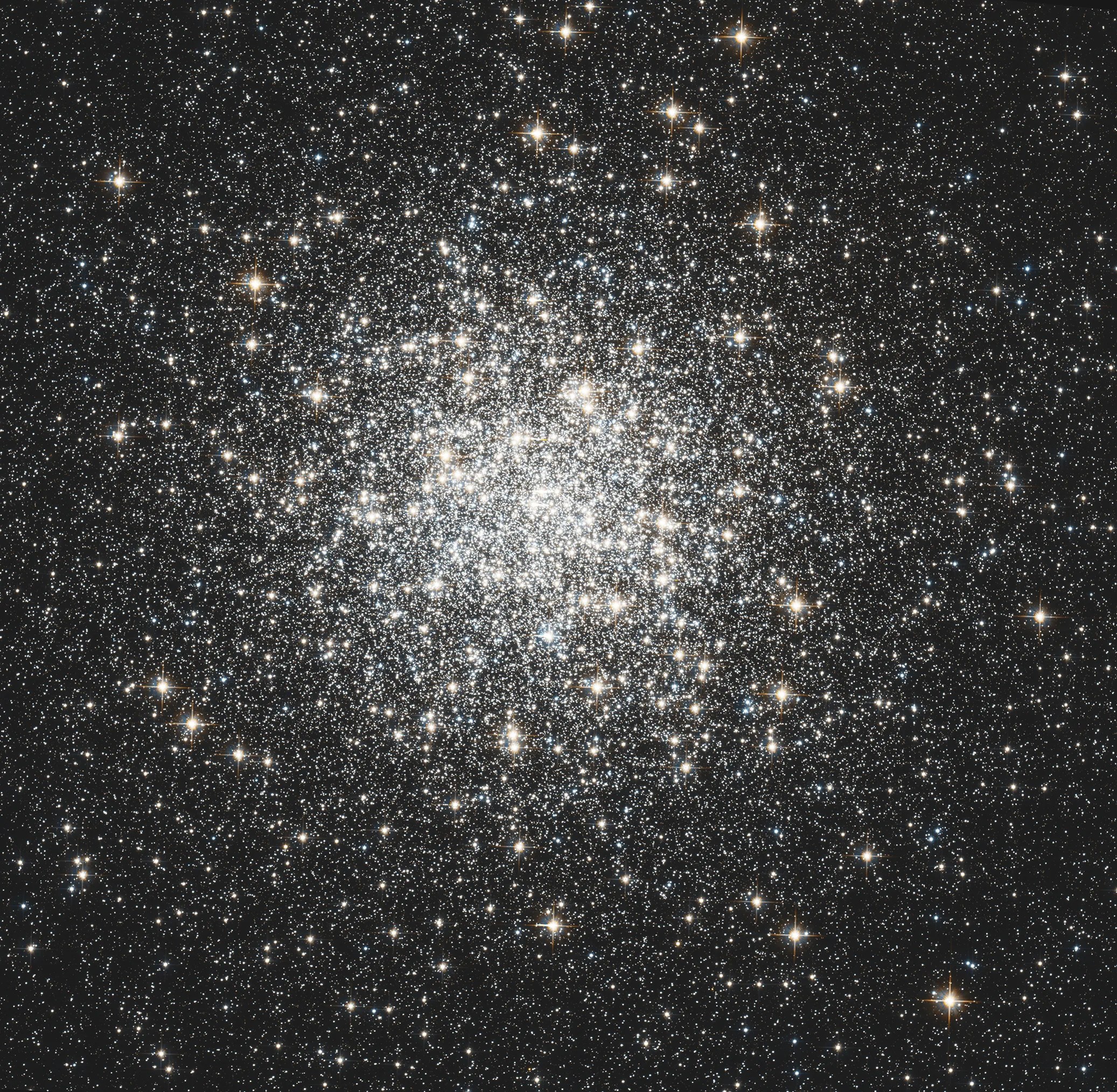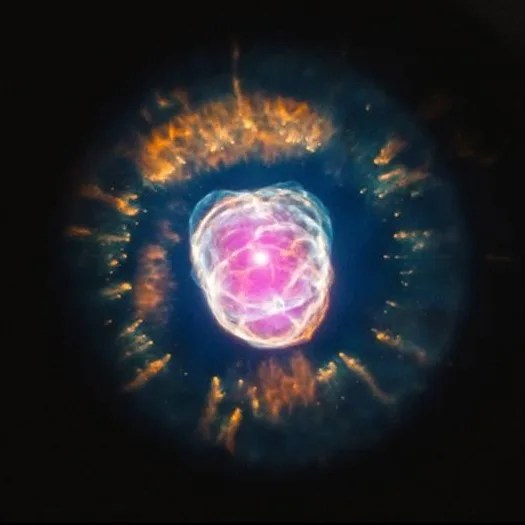Messier 84
This elliptical is one of the many galaxies that make up the Virgo Cluster.
Distance
60 million light-years
Apparent Magnitude
10.1
constellation
Virgo
object type
Elliptical Galaxy

Discovered by Charles Messier in 1781, M84 is an elliptical galaxy located 60 million light-years from Earth in the constellation Virgo. It is one of over a thousand galaxies that make up the Virgo cluster. With an apparent magnitude of 10.1, the galaxy can be spotted using a moderately sized telescope most easily during May.

This image of M84 combines observations taken by Hubble at both visible and infrared wavelengths. Although the image does not show the entire galaxy, it highlights one of M84’s most fascinating features: its central region. Previous Hubble observations of M84 taken with a spectrograph have indicated that the galaxy hosts a supermassive black hole at its core.
M84 is also notable for being the site of two stellar explosions called supernovas, one discovered in 1957 and the other in 1991.
For more information about Hubble’s observations of M84, see:

Explore Hubble's Messier Catalog
The following pages contain some of Hubble’s best images of Messier objects.

Messier 1 (The Crab Nebula)
Better known as the Crab Nebula, Charles Messier originally mistook Messier 1 for Halley’s Comet, which inspired him to create…

Messier 2
Hubble's image of Messier 2 is comprised of visible and infrared wavelengths of light.

Messier 3
Messier 3 holds more than 500,000 stars.




